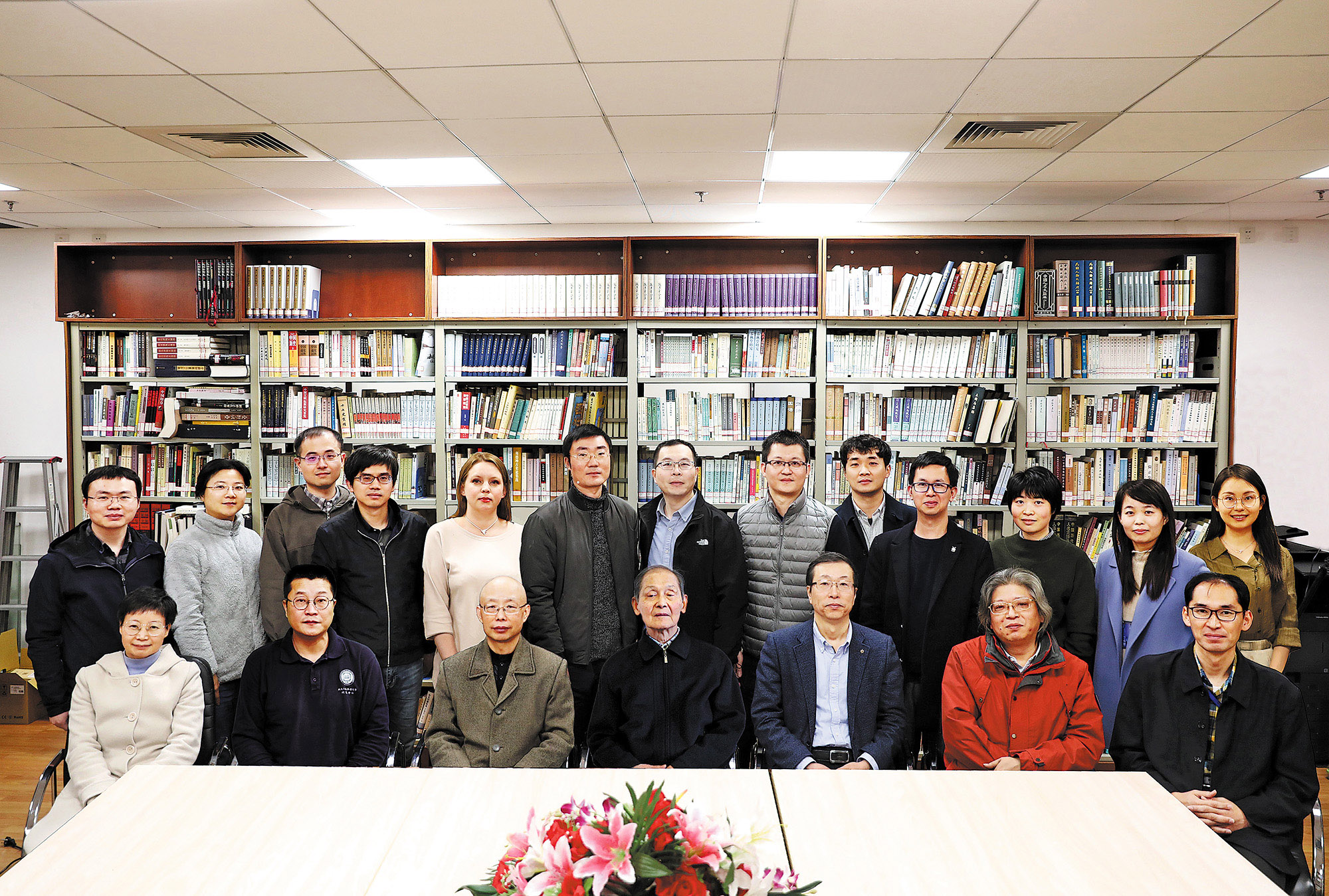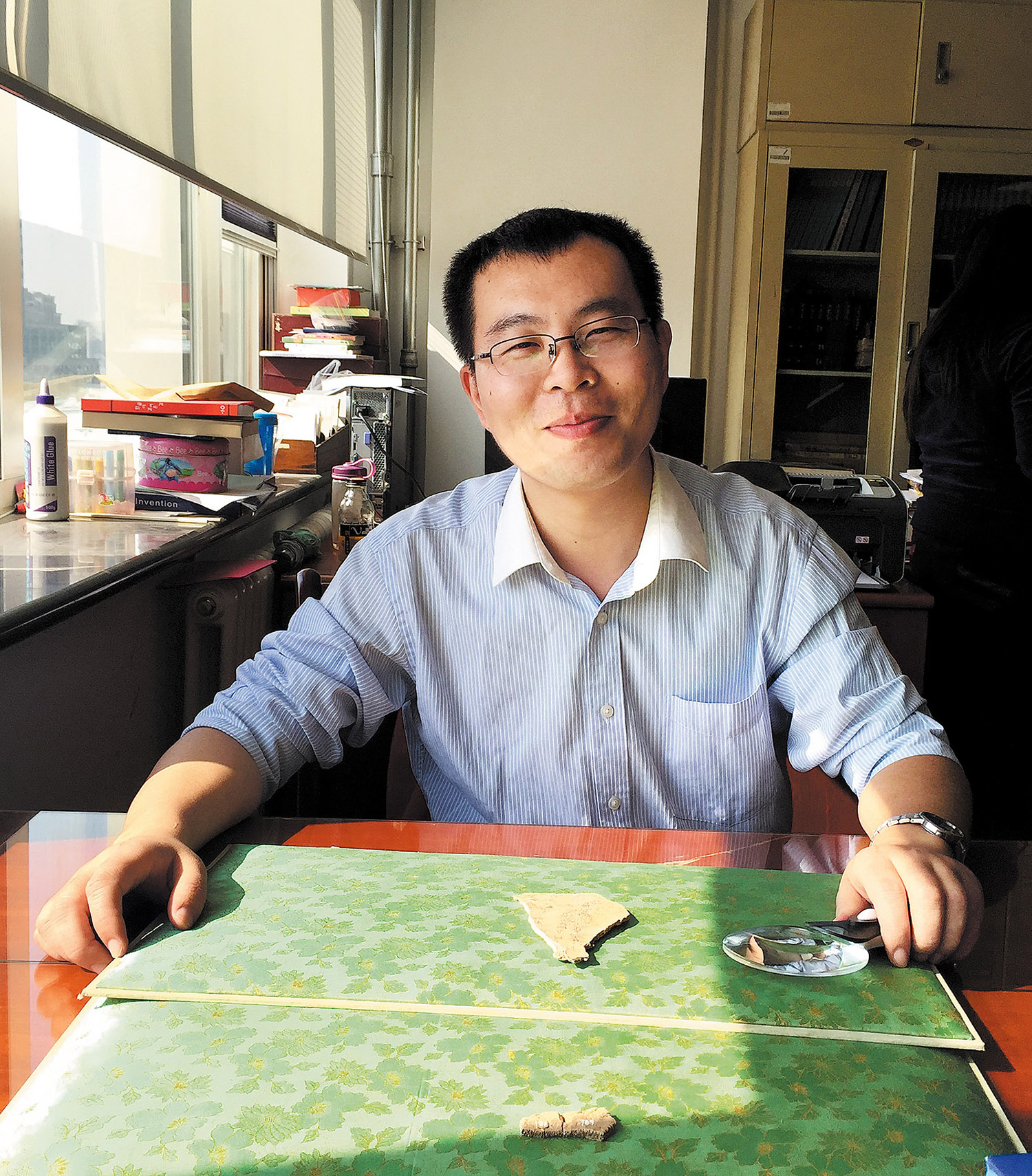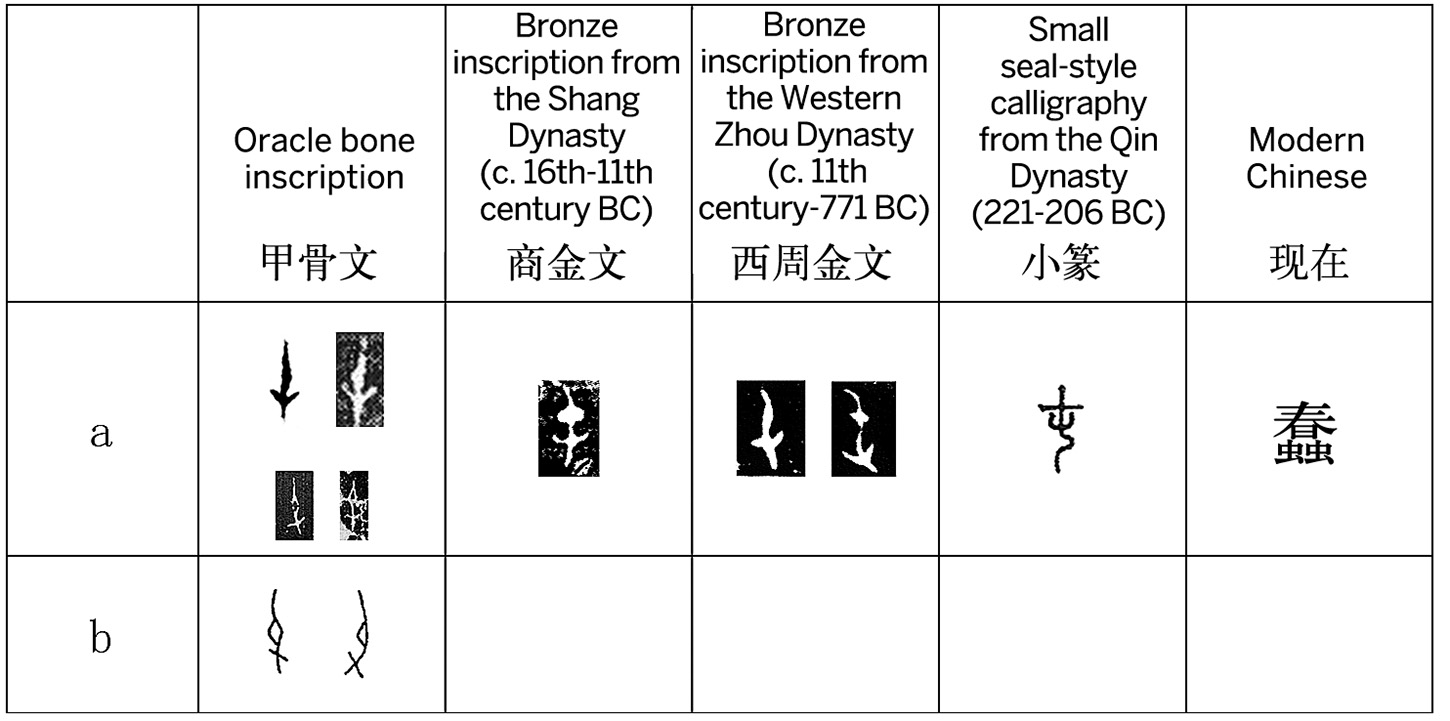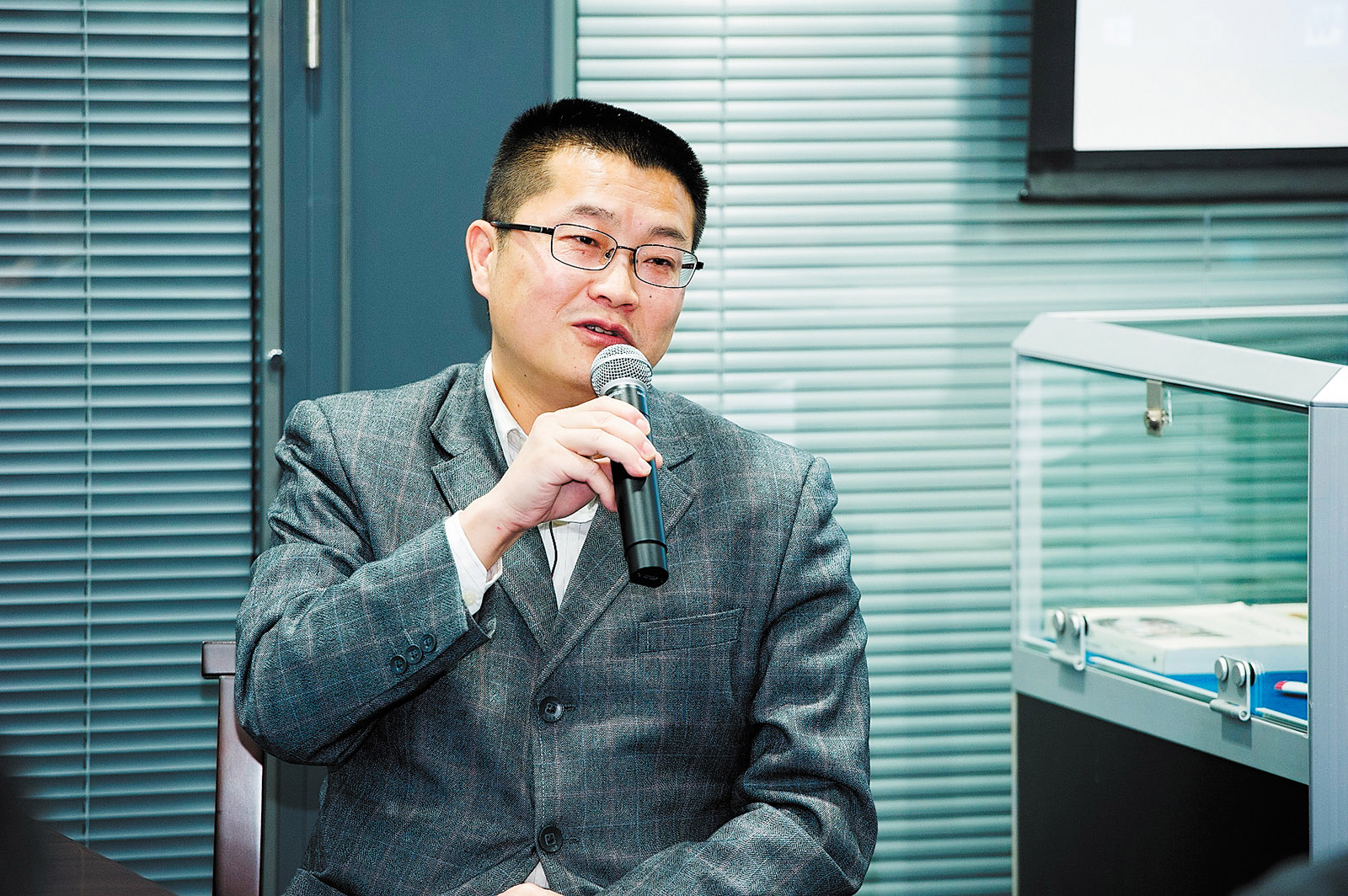A team of researchers strives to unlock the mysteries and meanings of Chinese oracle bone inscriptions, Wang Xin reports in Shanghai.

If we want to demystify an ancient civilization, decoding the language and writing of that time is an inevitable part of the work, as it usually provides the clearest view of history and evidence of daily life.
In China, there has long been a group of paleographers working on solving the mystery of oracle bone inscriptions, which are the earliest-known form of Chinese writing.
Professor Chen Jian, researcher Jiang Yubin and associate researcher Xie Mingwen from the Center for Research on Chinese Excavated Classics and Paleography at Fudan University in Shanghai have been studying ancient writing and oracle bone inscriptions for decades.
Led by notable paleographer Qiu Xigui, the center enjoys a stellar reputation among its peers, and its work has brought public attention to this little-known subject.
In January, Chen and Xie were recognized by the National Museum of Chinese Writing for their interpretation of characters on oracle bone inscriptions. The award adds to the one Jiang received in 2018 worth 100,000 yuan ($13,891), for confirming and explaining the meaning of a single, newly discovered oracle bone character.
"There are some 160,000 pieces of oracle bones in total scattered across the world, among which about 80,000 have been sorted and published or released to the public. If we were to compile a dictionary of oracle bone characters, we would need to include roughly 3,500 to 4,000 characters. To date, we have confirmed about 1,160 characters," says Jiang.

Messages from the past
Since the first oracle bone inscriptions were discovered in 1899, research of these precious materials has not stopped.
Found in the Yinxu Ruins in Anyang city, Central China's Henan province, the oracle bone inscriptions proved the existence of the Shang Dynasty (c. 16th century-11th century BC). The site was later determined to be the location of the last Shang capital.
We have benefited greatly from digitalization, which has lowered the barriers for our studies. It is easier to get high-definition digital photos of oracle bones from institutes and individuals across the world.
Chen Jian, professor at Fudan University’s Center for Research on Chinese Excavated Classics and Paleography
Etched into animal bones and turtle shells, the 3,300-year-old inscriptions — used for fortunetelling and recording major events of the time — are profoundly important for understanding Chinese civilization.
The Yinxu Ruins were inscribed as a UNESCO World Heritage Site in 2006. In 2017, oracle bone inscriptions were listed as part of the UNESCO Memory of the World Register program.
"The material remains discovered at Yinxu provide tangible evidence of the early history of Chinese writing and language, ancient beliefs, social systems, and major historical events, which are considered of outstanding universal significance," UNESCO states.
"One of the biggest challenges with research into oracle bone inscriptions is the difficulty in accessing original materials. In the past, you needed money to buy the oracle bones. It could be extremely hard too to get books of rubbings of the bones — let alone conduct research," says Chen.
"But now, we have benefited greatly from digitalization, which has lowered the barriers for our studies. It is easier to get high-definition digital photos of oracle bones from institutes and individuals across the world," Chen adds.
According to the nomination form submitted to the UNESCO Memory of the World Register program in 2016, the oracle bones are scattered across the globe in the collections of more than 100 institutes.

There are more than 90,000 pieces on the Chinese mainland and over 30,000 in Taiwan. There are also pieces in Japan, Canada, the United States, the United Kingdom, Germany, Russia, Sweden, Switzerland, France, Singapore, the Netherlands and New Zealand.
"In the past 110 years, about 3,900 scholars from around the world have carried out research on oracle bone inscriptions. There have been 16,000 published papers on the subject. The study of oracle bone inscriptions has become an internationally famous subject," reads the form.
Nevertheless, China still dominates the research on oracle bone inscriptions, mainly led by domestic academic institutions, including Tsinghua University, the Chinese Academy of Social Sciences and the Capital Normal University in Beijing, Fudan University in Shanghai and Jilin University.
"The inner circle of paleographic study in China is very small. There are over 100 scholars of Chinese paleography and less than 50 specialize in oracle bone inscriptions," says Jiang.
Despite the shrinking of oracle bone inscription studies overseas, international communication and cooperation still continues, with seminars, conversations and conferences held both online and in-person.
It is also worth noting that the common global working language for oracle bone studies is traditional Chinese, which is the precursor to modern Chinese. Therefore, acquiring the skill to read and write traditional Chinese characters is usually regarded as an obligatory course for those wishing to study the subject.

Choosing a lifestyle
Contrary to popular belief, paleographers are not just trying to figure out the meaning of individual as-yet-undeciphered characters.
"In our daily work, we are not looking at just a single word. Paleography can be defined as both narrow and broad: the former pertaining to the language and writing system, and the latter to the content recorded. So our study is not about a single character only, but is about the language, its meaning, and gaining a broader view of history," Chen explains.
He says that recognizing, interpreting and explaining a single word can form the basis of their work, but it is neither the only, nor the most important, task. Furthermore, decoding a single character usually requires a lot of effort and the accumulated knowledge from historical materials, aided by solid reasoning and a coherent trail of evidence that runs all the way from ancient times to the present.
A character inscribed on an oracle bone often looks very different to its modern counterpart. Take the character that Jiang won the award for deciphering as an example. The original character looks extremely simple, with roughly two strokes. As is often the case with ancient Chinese pictograms, they have become more complicated, written with more strokes, over time. It was eventually confirmed to be a simplified version of a character with 21 strokes: chun.
Furthermore, although chun usually means "foolish" or "stupid "today, based on abundant evidence, historical background, font evolution and contextual interpretation, Jiang reasoned that, in the oracle bone inscriptions, it is used to mean "turbulent".
"We tend to store a bunch of questions in our mind, which may get proved or answered by chance in a flash of inspiration," says Chen, who has been devoted to paleography for about three decades.
Jiang, who has specialized in oracle bone inscriptions for over 20 years, shares similar sentiments: "I think we paleographers are actually quite close to scientists, as we both have to be very focused and employ rigorous logic and evidence, as we pursue the true meaning of the writing."
As one of the leading institutions involved in paleography, the center has won numerous awards on various levels, both by individuals and the team. However, more than the public awards or honors, they care about what they actually contribute to the study.
"Choosing to be an academic is choosing a lifestyle. I have always said that the vocation of the scholar is to create new knowledge. One valuable consensus at our center is that we aim to become 'pure' scholars without too many distractions. We never feel like what we do is boring — even though it might seem so to the public. Instead, we enjoy our work and are having fun every day," Chen says.

Fostering the future
Not only are the professors enjoying the task to which they are committed, they are also encouraging the younger generation, which is already following in their footsteps and contributing to the study of oracle bone inscriptions with youthful vigor.
Yang Yi, Huang Bo and Cheng Minghui, three post-1990s doctoral students at the center, were the driving forces in the launch of the center's open and practical platform last February. Using technology like big data, the platform is a database that integrates updates on pieces of oracle bones that have been "rejoined" — basically, matching separate pieces that were originally part of the same oracle bone — which greatly facilitates the study of inscriptions.
They explained that it can be extremely hard to understand the inscriptions on a single piece of oracle bone, but when two or more pieces are rejoined, the inscription becomes more complete and provides more references. Although the pieces of a single oracle bone may be separated and kept in different institutions around the world, the platform is able to bring them together, enabling researchers anywhere to collaborate, regardless of distance.
Previously, the results of the rejoining of oracle bone pieces were intermittent and announced in publications or on websites, which made it hard to retrieve the information in an efficient and timely manner. The open online platform greatly reduces work for the scholars, as well as any repetition.
Constantly kept up to date, the database includes over 6,600 groups of rejoined oracle bones and has already received more than 3 million visits from researchers across the world.
Looking ahead, these committed paleographers and students are calling for a greater global joint effort to carry forward the study of oracle bone inscriptions.
One critical area the researchers would like to improve upon is the submission of images of inscribed oracle bone pieces by more collectors and institutions, as they form the basis of the study. Some institutions, such as the British Library, are doing a great job, according to the team, but there are still about 70,000 to 80,000 pieces that have yet to be located.
They are also calling for more paleography positions to be established at universities and institutions. "We have been consistently training PhDs and new paleographers, but only when their career path and future can be guaranteed, can they devote themselves to the research without worry, carrying the study of oracle bone inscriptions forward and forward," says Chen.
Contact the writer at wangxin2@chinadaily.com.cn


